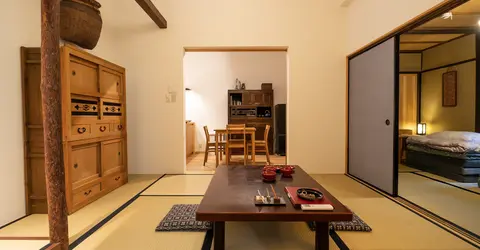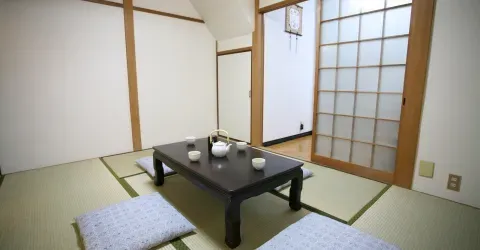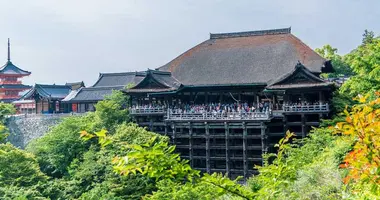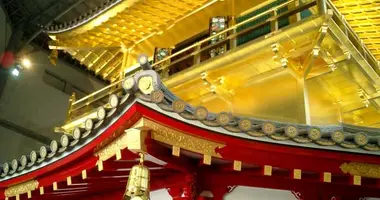Aneyakoji 姉小路通
Kyoto Historic District
Located in the center of Kyoto, a stone's throw from Nijo Castle, the historic district of Aneyakoji has managed to preserve its charm and peaceful atmosphere.
The district has retained its identity and its traditional Kyoto aspect. It is made up of quiet streets lined with isolated houses and elegant shops whose style is known as Machiya, wooden houses typical of Japanese city centers. Shops in the area are mostly long-established establishments, and often have wooden signs carved by famous artists and writers above their entrances.
There is Yaosan, a miso store founded in 1708 whose sign was painted and sculpted by Rosanjin Kitaoji, one of the most influential artists of the 20th century. Right next to it, you will find Kamesuehiro, a kyogashi shop founded in 1840 with a wooden sign decorated with wooden molds used to make these sweets, specialties of Kyoto.
Further down the street, Kawamichiya, which since the Edo period (1603 - 1868) has offered soba noodles and whose sign was designed by Tenko Nishida, a thinker, and politician. Next door, the Saiundo shop, founded in the early Meiji era (1868 - 1912) sells paints and brushes whose sign was designed by Tessai Tomioka, a Confucian scholar, and painter, who was also a customer.
Located at the intersection of Aneyakoji Street and Takakura Street, the Kyoto Museum sheds light on Kyoto's history and culture.
Two streets adjacent to Aneyakoji Street are also worth noting. Sanjo Street, located south of Aneyakoji Street, features a beautiful cityscape and is part of the Tokaido Highway, a historic road connecting Kyoto to Tokyo. Oike Street, located further north, was widened after World War II and is a symbol of post-war restoration.
Address, timetable & access
Address
Timetable
Accessible by Karasuma-Oike (Karasuma Line and Tozai Line) and Kyoto-Shiyakushi Mae (Tozai Line) subway stations.



































